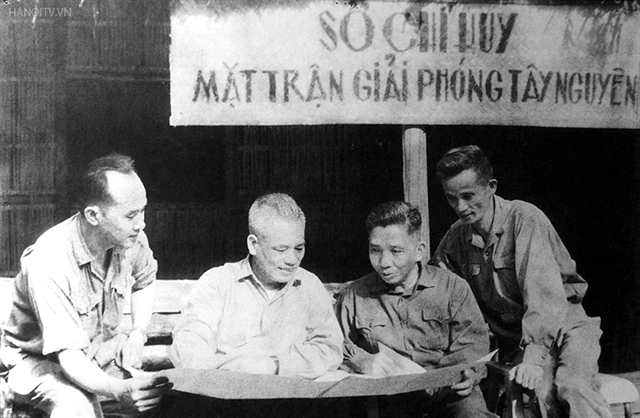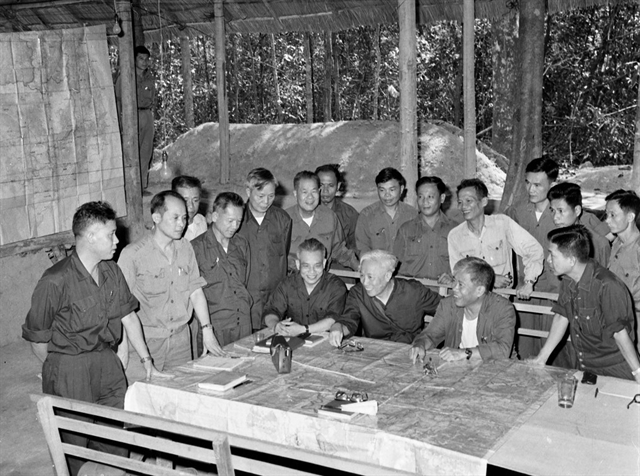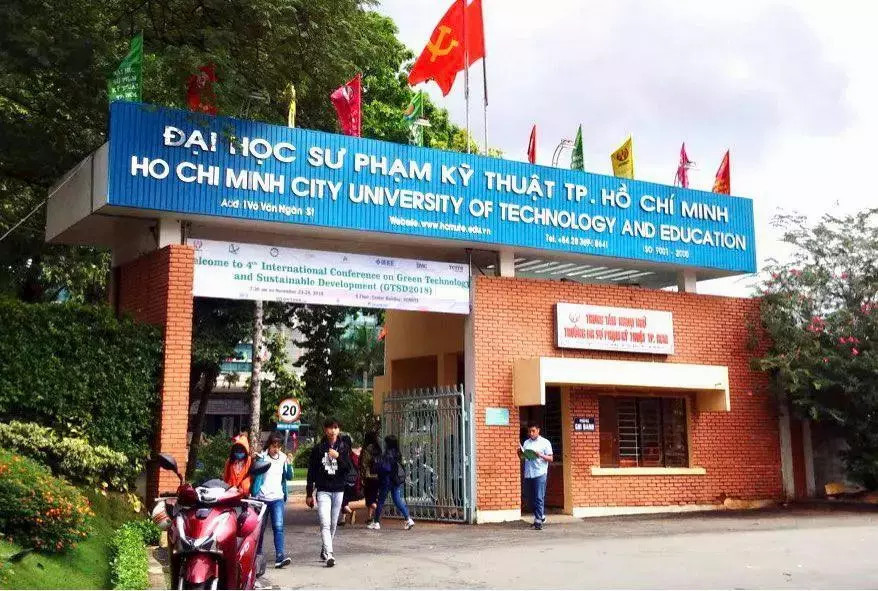General Văn Tiến Dũng: mastermind behind the Hồ Chí Minh Campaign_sporting – estoril
General Văn Tiến Dũng: mastermind behind the Hồ Chí Minh Campaign
April 27,ănTiếnDũng mastermindbehindtheHồChísporting – estoril 2025 - 08:55 |
| General Văn Tiến Dũng, chief of the General Staff of the Vietnam People’s Army (2nd from left), at the Central Highlands Front Command Post in February 1975 during the Spring 1975 General Offensive and Uprising Campaign. VNA/VNS Photo |
As the struggle for liberation of South Việt Nam approached its climactic end in the spring of 1975, all eyes turned to the southern front, where General Văn Tiến Dũng, commander of the Hồ Chí Minh Campaign, emerged not only as a military leader, but also as a symbol of strategic brilliance and unwavering patriotism.
He masterfully created and capitalised on key moments, orchestrating a rapid offensive that led to the fall of the US-backed Sài Gòn regime, the Republic of Việt Nam.
With that final push, the general offensive campaign brought an end to the prolonged and bloody conflict, concluding the Vietnamese people’s war of liberation of South Việt Nam and opening the path to national reunification.
Born in 1917 in the commune of Cổ Nhuế, Bắc Từ Liêm District, Hà Nội, Văn Tiến Dũng— alias Lê Hoài—was drawn early to the revolutionary cause. Committed to the ideals of communism, he dedicated his life to the liberation, building, and defence of the nation.
As Chief of the General Staff of the Vietnam People's Army (VPA), Gen Dũng played a leading role in several major military campaigns. From the Route 9–Southern Laos Campaign in 1971 to the Trị Thiên Campaign in 1972, he was a mastermind behind key operations that steadily eroded the US-Sài Gòn strength during the Vietnam War.
But it was in 1975, during the final leg of Việt Nam’s journey to national reunification, that his commands marked a historic turning point.
As the southern battlefield developed rapidly, the Politburo of the Vietnam Workers Party (now Vietnam Communist Party) and the Central Military Commission made a decisive move—dispatching Gen Dũng to the Central Highlands. Accompanied by key personnel from the Ministry of National Defence, he led a special command group code named Group A75.
Operating under strict secrecy, the group served as the forward command of the VPA.
Now holding supreme command in the South, Gen Dũng was more than a strategist—he was a steady, guiding presence. Staying close to the frontlines, he assessed, adapted, and steered the course of battle in real time.
In the Central Highlands Campaign, he worked alongside Lieutenant General Hoàng Minh Thảo and made what became a historic decision: to select Buôn Ma Thuột as the campaign’s focal point.
The fall of Buôn Ma Thuột on March 10, 1975 dealt a devastating blow to the Sài Gòn army, shattering their defences in the Central Highlands and sending shockwaves through the enemy military.
Recognising the moment, Gen Dũng quickly recalibrated the overall campaign strategy. Under his direction, a rapid offensive of the liberation force surged through the Central region. Cities including Huế and Đà Nẵng were liberated in swift succession, accelerating the collapse of the Sài Gòn regime.
Orchestrating the final blow
Following sweeping victories in the Central Highlands and the Huế Đà Nẵng campaigns, the stage was set. The moment had come to strike the decisive blow.
The Politburo issued a clear and urgent resolution: to launch a general military offensive and public uprising to end the war swiftly.
“It would be best to begin and end in April,” came the directive.
On April 7, 1975 General Võ Nguyên Giáp, Minister of National Defence and Commander-in-Chief, sent telegram No. 157-HDKTK to all units, commanding them to: “Speed up, speed up even more; be bold, be even bolder. Make use of every hour, every minute, to advance to the front to liberate the South. Be determined to fight, and to win decisively!”
On the same day, during a key meeting of the Central Party Office for South Việt Nam, Gen Dũng, representing the Central Military Commission and the Commander-in-Chief of the VPA, underscored the country’s strength and urged prompt, decisive action.
Time, he stressed, was a crucial advantage. He called on the Politburo and Central Military Commission to rally reinforcements from both North and South, ensuring no delay on the decisive front.
Shortly after, the Politburo formalised the Sài Gòn–Gia Định Campaign Command. On April 14, it was renamed the Hồ Chí Minh Campaign, with Gen Dũng appointed as Commander-in-Chief.
Under his leadership, the campaign plan was finalised within just a week. From April 15 to 21, a comprehensive and high-stakes blueprint was drawn.
The objective was clear: a rapid and complete victory. To achieve this, massive concentrations of troops, firepower, and logistics would be deployed, with strength applied across all fronts.
The strategy defined the concerted coordination between military assault and public uprising. The army would strike from without, while the people would rise from within. If the enemy anticipated the time and place, overwhelming force would serve as the surprise.
Yet for Gen Dũng, victory alone was not enough. He aimed to spare the city and protect civilian lives. His goal was to break the Sài Gòn regime’s military and political stronghold—without reducing the city to ruins. A liberated city, not a destroyed one, was the vision.
 |
| General Văn Tiến Dũng (seated, far left) with fellow commanders of the Hồ Chí Minh Campaign in 1975. VNA/VNS Photo |
After careful analysis, the final plan was formed. Strategic forces would encircle and isolate Sài Gòn, cutting off retreat and reinforcement. Meanwhile, main forces would dismantle outer defences and eliminate key enemy divisions.
At the core of the strategy was a five-pronged assault on five vital targets: Tân Sơn Nhất Airport, the Sài Gòn Joint General Staff headquarters, the Independence Palace, the Capital Military headquarters, and the National Police headquarters.
Each attacking army wing would be led by the equivalent of an army corps, supported by tanks and mechanised units. Once the above-said targets were taken, all liberation forces were to converge on the Independence Palace.
On April 22, during the final strategic review, the command map was laid on the table, crisscrossed with red lines representing the assault directions. Many said that the formation resembled five lotus petals, all converging on the prime target. The palace -- the seat of the Sài Gòn regime -- was to become the rendezvous of the liberation forces.
Gen Dũng, together with Political Commissar Phạm Hùng, signed the campaign map that day. Soon after, the Politburo gave its final approval. Across the country, troops stood ready.
Command at the crucial hour
The decisive moment had arrived.
By the afternoon of April 26, 1975, Sài Gòn was surrounded. Special forces and commandos had already infiltrated the outskirts and inner city, ready to strike.
That night, the Hồ Chí Minh Campaign officially began. Outer defences were rocked by powerful strikes. From his forward command post, Gen Dũng monitored the battle closely—adjusting plans, issuing orders, and ensuring precision with every move.
And then came April 30.
At dawn, the final wave of assaults surged forward. Under Gen Dũng’s direct command, liberation forces entered the city. Tân Sơn Nhất Airport was overrun. Command centres of the enemy’s airborne division and air force followed.
By 11:30am, the red and blue flag with golden star of the South Vietnam Liberation Front flew on top of the palace. President of the Republic of Việt Nam Dương Văn Minh surrendered unconditionally.
Gen Dũng officially declared the mission complete.
Reflecting on his comrade, Gen Võ Nguyên Giáp once said that Văn Tiến Dũng was “a general with a great spirit of determination and exceptional military talent—a resilient and unyielding communist who devoted his entire life to the ideals of the Party, to national liberation and reunification, and to the building and defence of socialist Việt Nam”.
Gen Dũng later served as the Minister of National Defence from 1980 to 1986. He passed away on March 17, 2002, at the age of 85. VNS
- Kèo Nhà Cái
- Người phụ nữ mang bụng bầu đi đẻ, đến viện bác sĩ phát hiện không có thai
- 5 vũ khí 'xương sống' của không lực Mỹ
- Sinh viên trường nào của ĐH Quốc gia Hà Nội học ở Hòa Lạc?
- Trung Quốc chọn Joachim Low vì giấc mơ World Cup
- Diva Hồng Nhung: "7 ngày sau phẫu thuật, tôi không hát được vì bị tắc ở cổ"
- Kết quả bóng đá Khánh Hoà vs Bình Dương
- Pochettino tức giận đòi phạt, cầu thủ Chelsea vẫn tung tăng đi chơi
- Wimbledon 2019: Federer tốc hành vào tứ kết Wimbledon
- Gov't ramps up efforts to curb wastefulness for socio
- Djokovic 3
- Hình Ảnh
- Tin HOT Nhà Cái


